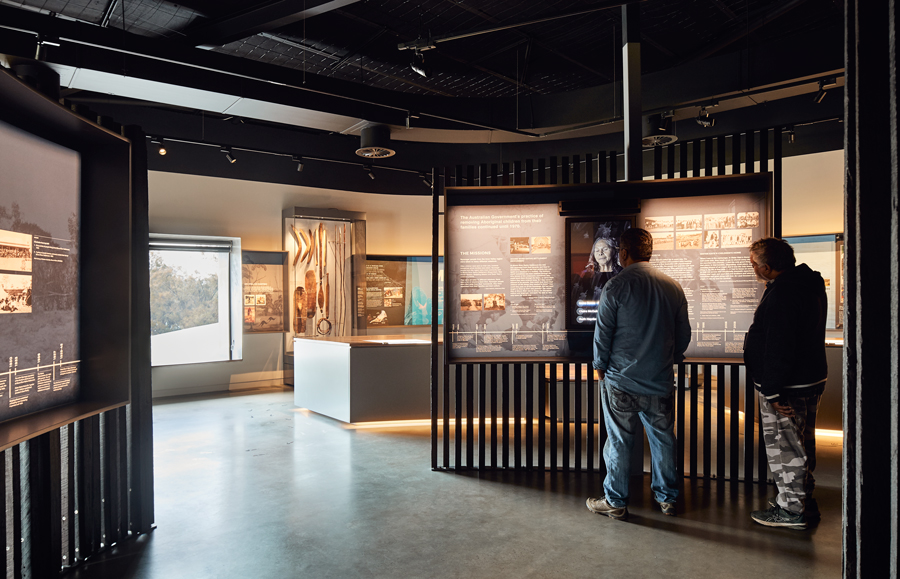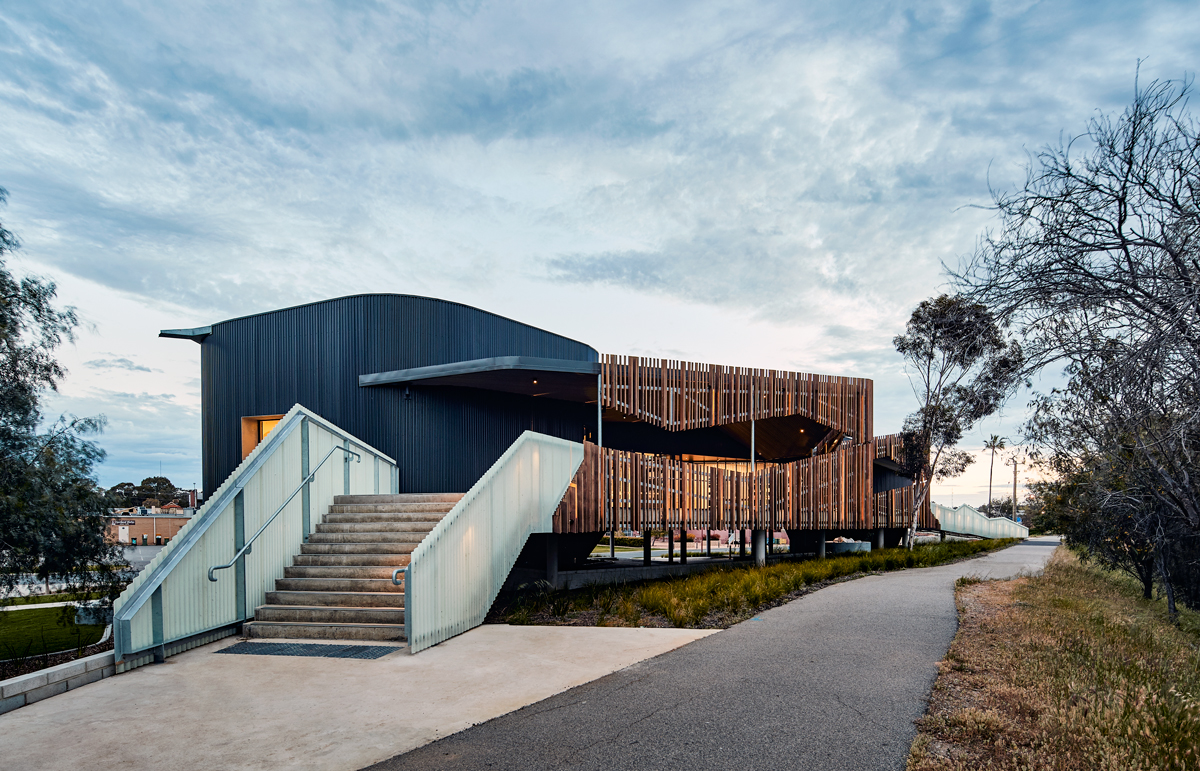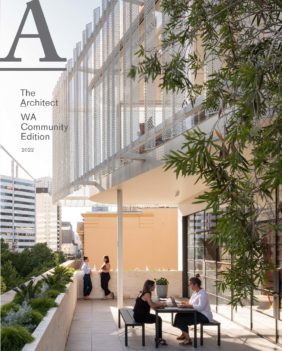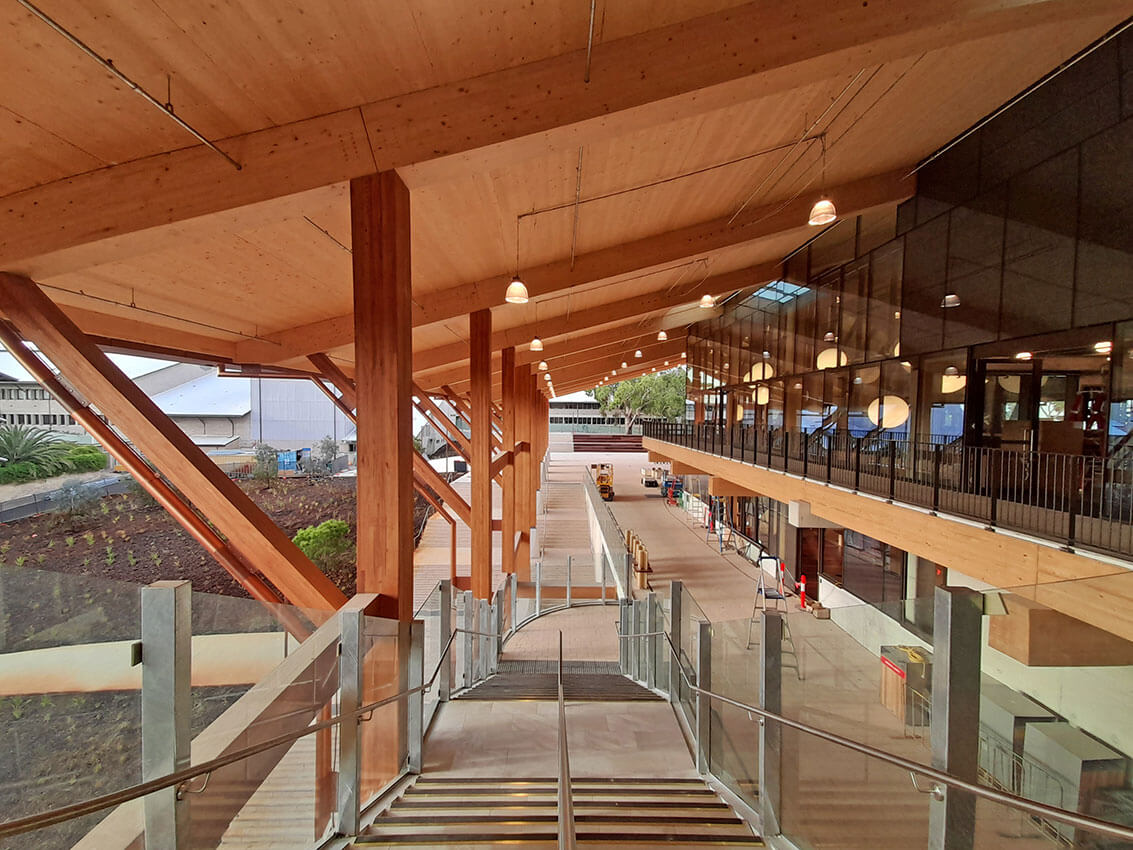Standing proudly on Ballardong Nyoongar land, Iredale Pedersen Hook’s Bilya Koort Boodja (meaning “river, heart, land”) recognises the importance of Country while acknowledging that this recognition has not always been given.
Bilya Koort Boodja Centre for Nyoongar Culture and Environmental Knowledge is located at the confluence of the Avon and Mortlock rivers in the town of Northam. The centre provides an immersive and interactive education experience recognising Aboriginal history, heritage and culture in the Nyoongar Ballardong region and beyond.
Northam and the Avon Valley have a chequered history in the context of the local Nyoongar people. The Ballardong Nyoongar people occupied the region long before European settlement and their custodianship is embedded in Country. Since European settlement in the region almost 200 years ago, the Ballardong Nyoongar people have faced many challenges and changes. In 1933, the entirety of the Northam district’s Nyoongar population was forcibly removed to the Moore River Native Settlement. The Ballardong Nyoongar have in turn resisted and adapted but the commissioning and construction of Bilya Koort Boodja shows that their culture has survived.
Aboriginal culture is site specific, meaning that culture cannot be appropriated from another site or area. Consultation with, and consent from, the people of the Country to which the language, culture and design relates is required. In their design of Bilya Koort Boodja, Iredale Pedersen Hook in consultation with the Ballardong Nyoongar community has created a built form which is both imbued with a strong sense of place and through the siting of windows and other openings, provides links to culture beyond the Ballardong Nyoongar Country on which it sits.
Historically in Northam, buildings between the town centre and the river were sited towards the main road rather than the river. A driver of this project was the desire to flip the orientation of the buildings to address the river, highlighting its cultural significance – the water being known to the Ballardong Nyoongar people as the Gogulgar.
Accordingly, Bilya Koort Boodja stretches and opens towards the river, welcoming both visitors and the surrounding Country with an open arm gesture. It stretches the experience and embeds its form in the landscape. It reaches towards the suspension bridge which spans the river, and Bilya Koort Boodja becomes the link between housing on the western side of the river and the town centre itself.

The community was clear in its brief that it didn’t want a European looking building and Iredale Pedersen Hook met this brief. In his recently published book, Sandtalk, Aboriginal scholar Tyson Yunkaporta noted: “We don’t have a word for non-linear in our languages because no one would consider travelling, thinking or talking in a straight line in the first place. The winding path is just how a path is and therefore it needs no name.”
This concept is reflected in the design of Bilya Koort Boodja, which stands out from its surrounds as two darkly clad curvilinear shapes. Internally, this is reflected in a series of carefully planned spaces in which stories are embedded in a manner which allows visitors and community members to journey through both the built form and the region’s history and engage and interpret the local culture in their own way. This is a visual manifestation of the cultural safety and respect which guided Iredale Pedersen Hook’s design and the centre’s layout and use of space has created an immersive experience which both carefully guides visitors and warns them of content before it is seen.
Iredale Pedersen Hook has used common materials in different ways to express the region’s environment. The sinuous timberslatted screen, created from recycled jarrah, on the western side reflects the contours of the river it faces and gives the impression, when inside, of looking through trees towards the river. From outside, the timber battens create a similar impression of looking into a wooded area which, prior to European settlement, would have lined the river. Creating an effect of light and shadow, the timber screening complements the polycarbonate sheeting which, when backlit at night, creates performance in itself by creating silhouettes as people move beyond. The screens also express the relationship between inside and out, creating transitional zones.
Bilya Koort Boodja’s architecture is intended to be ephemeral. Its built form is secondary to the natural environment and is deliberately in contrast to the traditional buildings of Northam. Through respectful and culturally appropriate design propositions, the building celebrates Northam’s cultural past in anticipation of the return of the Ballardong Nyoongar ancestors and encourages the community to protect the region’s land and waters for future generations.
Cassandra Simpson is currently completing her Masters of Architecture at the University of Western Australia.





